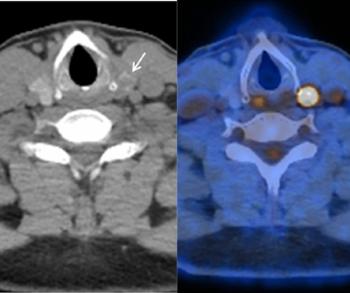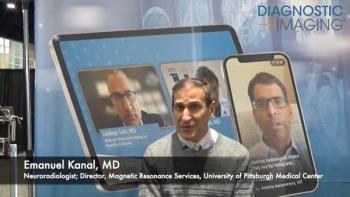
Hand-carried system brings premium features to bedside
Ultrasound cart options transport peripherals, even allow for rolling offsite like carry-on airline luggage Philips Healthcare will begin pitching its first hand-carried ultrasound scanner this month. The scanner, officially announced in early August, will pack premium performance echocardiography into a 13-pound frame.
Ultrasound cart options transport peripherals, even allow for rolling offsite like carry-on airline luggage
Philips Healthcare will begin pitching its first hand-carried ultrasound scanner this month. The scanner, officially announced in early August, will pack premium performance echocardiography into a 13-pound frame.
Flagship technologies, including Philips' PureWave and XRES, will be standard on the compact platform along with a wide range of portability options. The scanner is scheduled to begin shipping in the fourth quarter. The new system will likely list for between $80,000 and $100,000, depending on whether a transesophageal transducer is included.
Philips is coming late to the compact ultrasound marketplace, whose growth in recent years has overshadowed the cart-based segment. GE Healthcare and SonoSite, which pioneered hand-carried ultrasound, dominate sales.
But Philips' new CX50 has an advantage over competing products, according to Jim Brown, director of clinical and technical marketing at Philips Healthcare.
"We know there are already a lot of laptop-type systems. But when we did the research behind developing our compact system, we heard from customers that they did not have the confidence level they needed to do the most clinically challenging patients or the type of studies that required high-level imaging," Brown said. "On the CX50, you get the advanced technology you expect to find on a premium system."
Engineers packed the necessary computing horsepower into the CX50 by scaling down circuit boards into application-specific integrated circuits, while handing other hardware-driven functions over to software.
"We have iE33 performance in a compact scanner," Brown said.
Not all the power of the iE33, however, is available on the CX50. Only the Philips cart-based echo system can visualize the heart in 3D or apply advanced acoustics with Philips X matrix technology.
"But on most patients routinely seen in labs, the CX50 is going to do the job," he said.
Users can carry the CX50 using its built-in handle, although Brown expects many buyers will buy the optional cart to transport the system, its gels, and peripherals such as an additional transducer and printer. The cart includes an AC adapter for charging the portable system's battery. The new compact system can also be taken offsite, using a travel case that looks like the carry-on baggage pulled by airline travelers.
Providing high-quality images at the bedside will improve diagnostic confidence and reduce the need for repeat studies that must often be done to follow up the simpler and less complete exams done on portable scanners, Brown said. The CX50 delivers diagnostic information on large or otherwise difficult-to-image patients, while providing the portability to reach the bedside, operating room, or coronary care unit.
The crystal technology that forms the backbone of Philips' PureWave transducers improves far-field resolution while allowing the imaging of various patient body types on a single probe.
Initially developed for MR, the company's advanced XRES adaptive image processing virtually eliminates noise by cutting speckle, haze, and clutter. One-button image optimization, accomplished with Philips' iSCAN, adjusts settings automatically.
"The last thing you want to do is fiddle with the system when you are right next to a critically ill patient," Brown said.
QLAB software, migrated from the iE33 flagship, provides quantitative assessment of cardiac anatomy and function. Plug-ins for Tissue Motion Quantification with speckle tracking, Strain Quantification, and Region of Interest are also supported.
The company's active native acoustic data capability refines the display, fine-tuning the scanning parameters on single images, clips, and stored 2D and Doppler. Readjustments can be made during or after the exam, as seen on the built-in 15-inch high-resolution monitor or transmitted via wired, wireless, or DVD.
"Our philosophy is to tap into advanced technology
to get the best images as quickly as possible,"
Brown said.
-By Greg Freiherr
Newsletter
Stay at the forefront of radiology with the Diagnostic Imaging newsletter, delivering the latest news, clinical insights, and imaging advancements for today’s radiologists.




























